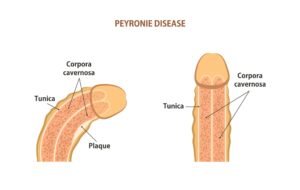Pityriasis Alba (White Patches On The Skin)
Understanding Pityriasis Alba: A Common Skin Condition
Read Time: 8 minutes
Pityriasis alba is a benign skin disorder characterized by light-colored or white patches, primarily affecting children and adolescents. Often mistaken for other skin conditions, it is non-contagious and typically resolves without intervention. This guide explores its symptoms, causes, diagnosis, and treatment options to help you better understand and manage this condition.
What Is Pityriasis Alba?
Pityriasis alba is a prevalent skin condition that affects approximately 5% of children in the United States, typically between the ages of 6 and 14. It manifests as hypopigmented (lighter) patches on the skin, most commonly on the face, but it can also appear on the neck, chest, back, or upper arms. Though harmless and non-cancerous, the patches can cause cosmetic concerns for some individuals.
Symptoms of Pityriasis Alba
The hallmark of pityriasis alba is its distinctive patches, which may vary in appearance depending on the season or skin tone. Common symptoms include:
-
Light-colored patches: These are often pale pink or red initially, fading to a lighter shade than the surrounding skin.
-
Shape and size: Patches are typically circular or oval, ranging from 0.25 to 1 inch in diameter.
-
Texture: The affected areas may feel scaly, flaky, or slightly raised, particularly in dry conditions like winter.
-
Mild itching: Some individuals experience slight itchiness, though the patches are generally not painful.
-
Blurry borders: Unlike other conditions, the edges of the patches blend gradually into normal skin.
In summer, the patches may become more noticeable against tanned skin, while in winter, their scaliness is more pronounced due to drier air.
Causes of Pityriasis Alba
The exact cause of pityriasis alba remains unclear, but several factors are thought to contribute:
-
Post-inflammatory hypopigmentation: The condition may follow skin irritation, such as dermatitis, leaving lighter patches as the skin heals.
-
Melanocyte activity: Reduced activity of melanocytes, the cells responsible for producing melanin (skin pigment), may lead to lighter patches.
-
Overuse of corticosteroids: Excessive use of topical steroids for conditions like eczema can lighten the skin in affected areas.
-
Genetic factors: Certain genetic conditions linked to hypopigmentation may play a role.
-
Vitamin D deficiency: Preliminary research suggests a possible link with low vitamin D levels, though more studies are needed to confirm this.
While sun exposure often highlights the patches, it is not definitively known to cause the condition.
Diagnosing Pityriasis Alba
A healthcare provider can typically diagnose pityriasis alba through a physical examination and a review of the patient’s medical history. The condition is often confused with other skin disorders, such as:
-
Tinea versicolor: A fungal infection causing similar white patches.
-
Vitiligo: An autoimmune condition with stark-white, sharply defined patches.
To differentiate, dermatologists may use:
-
Wood’s lamp examination: A handheld UV light highlights pigment differences in a darkened room.
-
Potassium hydroxide (KOH) test: Skin cells are scraped, mixed with KOH, and examined under a microscope to rule out fungal infections like tinea versicolor.
💡 Frequently Asked Questions
What Is Pityriasis Alba?
Answer coming soon. We are working on detailed responses to this common question.
Is pityriasis alba triggered by means of a vitamin lack?
Answer coming soon. We are working on detailed responses to this common question.
Does Pityriasis Alba At any time Move Absent?
Answer coming soon. We are working on detailed responses to this common question.
Is Vaseline Superior For Pityriasis Alba?
Answer coming soon. We are working on detailed responses to this common question.
⭐ Expert Tips
- Include seasonal or trendy variations to keep your meals exciting.
- Highlight prep shortcuts or time-saving techniques for busy cooks.
- Consider dietary restrictions and include substitution suggestions.
✅ Key Takeaways
- These dinner ideas are perfect for impressing guests or enjoying special occasions.
- Choose recipes that match your skill level and available kitchen tools.
- Presentation and taste both contribute to a memorable dining experience.
📣 Join Our Community
Want more inspiration like this? Subscribe to our newsletter for weekly dinner ideas and cooking tips!







